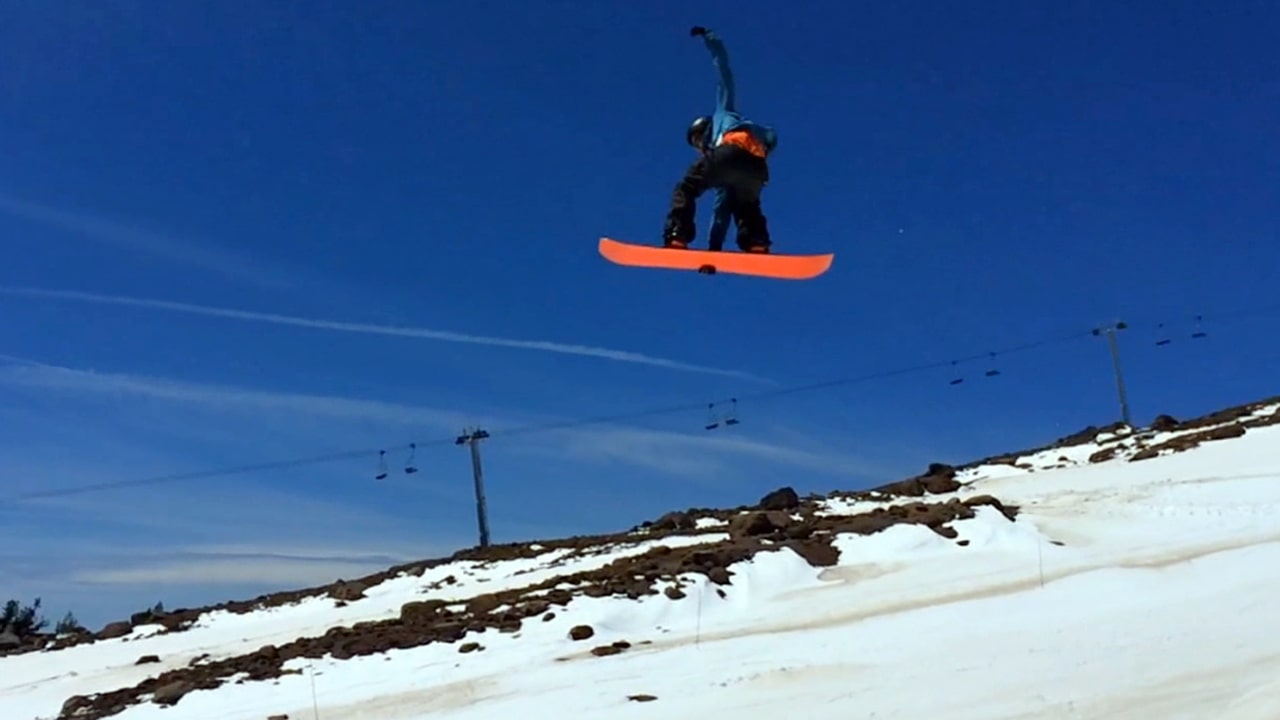The Trick
In-Depth Tutorial
About the Back 3
A backside 360 is one of the first tricks you will learn on a snowboard, generally after frontside and backside 180s. Backside is typically preferred by goofy riders, while frontside is typically preferred by regular riders. This is due to the fact that most people naturally spin best left. Why? It’s a mystery. Backside 360s can be scary at first due to their blind nature. The wonderful thing about a backside 360 is that you can easily spot your landing. The first 180 is blind, while the landing is visible for the entire second half of the trick. This makes it easy to bring the rotation all the way around. If you are spinning too slowly, you can easily make up for this once you spot your landing by turning your legs more quickly.
Setting It Up
You want to approach the takeoff in a small S-carve. This means approach the jump on your heels and carve to your toes so that you are taking off on your toes perfectly straight off the takeoff. You do NOT want to be carving diagonally up the takeoff on your toes. This is important, and that is what makes the S-carve so important. It allows you to be set on your toe edge, but still take off straight. Once you take off, throw your front arm towards the takeoff of the jump and turn your head over your back shoulder. You do not have to throw too hard for a 360, even on a small jump. It is not a big rotation, and control is important. A backside 360 is not a trick that has to be “hucked.” Slow and controlled is best.
In the Air
The first 180 is the most difficult and scariest part as it is blind. As long as you commit, you will see your landing at the 180 mark. It is at this point that you can decide to keep rotating or open up and prepare for the landing. As you come around, it is best to land flat-based as opposed to on an edge for the most stability. Even putting your tail down slightly before the rest of your board can help with landing. As you become more comfortable, you may find that a Mute grab, a Stalefish grab, or a Tail grab are the most natural. Locking in a grab can help stabilize you in the air, so once you are ready, get a grab in. It’s way steezier too! Best of luck!


Join the Discussion
You must be logged in to post a comment.